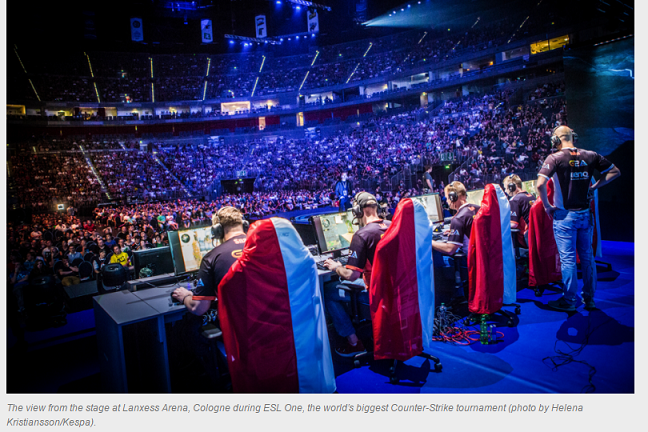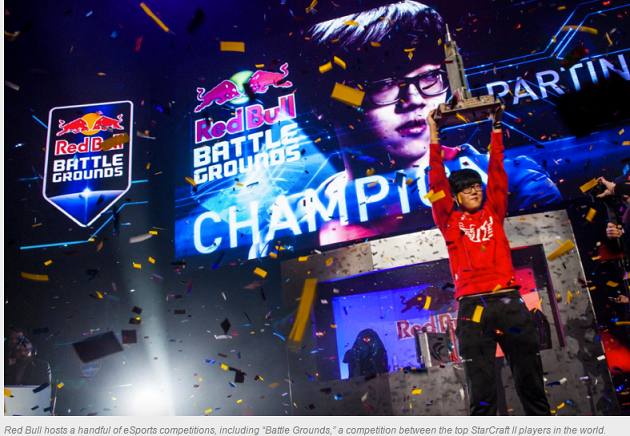
The emergence of social networks as sports broadcasters, combined with the ever growing popularity of eSports, holds huge potential, and risk, for brands and fans.
The way that we consume sports has completely changed over the last decade. While on-demand, multichannel coverage means we can watch matches when and where we want, non-traditional players like Twitter (showing NFL Thursday Night games through the social media site) and Periscope (effectively allowing anyone to become a live broadcaster) have been encroaching on ESPN’s turf.
Broadcasters like ESPN are adapting in two ways – finding new ways to distribute live sport, including testing live coverage at this year’s Wimbledon tennis championship through their Twitter page, as well as finding new sports to broadcast. Most notably eSports.
eSports may not yet be mainstream, but ESPN is investing heavily into this rapidly growing new sector by showing live events, behind the scenes content and player profiles.
The potential for brands and broadcasters alike is clear; with some 226 million people expected to watch or participate in eSports in 2016. Forget spotty teenagers in basements, recent research by Newzoo shows these 226 million to be any brand’s dream audience. They are diverse, digitally engaged and in the US 38 percent of them are women and 44 percent are parents. If you want to hit the next generation of consumers, there are far worse places to start.
Some, like Nissan and Red Bull were quick to climb onto the eSports bandwagon, but as more brands and broadcasters try to carve off a slice of the pie, there are things to consider before leaping in.

Credibility
Gamers, just like sports fans, can see straight through any half-baked attempts to gatecrash their party. We have moved beyond the realms of simply slapping your logo on an advertising hoarding on FIFA or Madden. Instead, brands need to invest in the long-term. They must consider what positive change they want to create for consumers and how you they use data to create something effective and meaningful.
Consumers have started to figure out that not all social media “influencers” are totally impartial and are actually getting paid by brands to push products onto fans, so it’s important not to fall into that trap in gaming.
Be innovative
There is no set advertising model to follow for eSports, so don’t be afraid to try new stuff. Take Manchester City FC for example who in July 2016 signed their first ever eFootballer — a gamer who will now play as Manchester City in tournaments.
Moving briefly away from eSports, take Pokémon Go, who combined augmented reality with location based gaming to create a game that in the first 24 hours post-launch, achieved more downloads on Android devices than Tinder (a staggering figure when you consider it only launched in the US, Australia and New Zealand), and saw Nintendo’s share price rise by 53 percent in its first week.
Targeting your audience
Nielsen’s most recent “Total Audience Report” indicates that Americans aged 18-24 watched a weekly average of 16 hours and 18 minutes of traditional TV during Q4 2015. That represents a year-over-year decline of roughly one-and-three-quarter hours per week. This means that while TV offers scale, brands and broadcasters will need to consider other channels and create better content to engage audiences.
For example, do your ambitions only go as far as display advertising? Or could you invest in a long-term strategy that sees you create your own branded franchise within a league. The New York Red Bulls in the MLS are have adopted this model.
Alienating your current consumer
History is littered with examples of mainstream society trying to fight back against what is new and different. One of the most memorable examples in gaming was when the game Grand Theft Auto seemed to suddenly become the sole reason for gun crime.
If your brand is looking to get involved with any kind of game that young people will play for 20 hours a day and can make money off, expect their parents to get upset about the game and your brand by association. Consider for example what would happen when the Halo or Call of Duty league goes mainstream.
As brands and agencies search for new and exciting ways to engage with consumers and develop a credible and mutually beneficial dialogue, eSports represent a phenomenal opportunity that should be embraced, but make sure you go in with your eyes open.
Written by Henry Riggall, Assistant Director of Global Growth, J. Walter Thompson Company.


